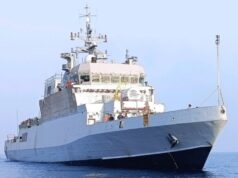Balakot proof is ‘blowin in the wind’, Pakistan doesn’t want to see it, says IAF chief BS Dhanoa
Air Chief Marshal Dhanoa quoted lines from an iconic Bob Dylan track in response to a question on Pakistan downplaying the pre-dawn raid by the IAF’s Mirage 2000 fighters and also denying that any damage was caused by the precision bombing.
Pakistan is refusing to acknowledge the damage caused by the Indian Air Force’s unprecedented, peace-time, cross-border strike against a terror camp in Balakot on February 26 although the proof exists in front of its eyes in the form of the bombed-out structures, IAF chief BS Dhanoa said on Friday.
He asserted that Indian fighter planes had struck their intended targets with precision.
Air Chief Marshal Dhanoa quoted lines from an iconic Bob Dylan track in response to a question on Pakistan downplaying the pre-dawn raid by the IAF’s Mirage 2000 fighters and also denying that any damage was caused by the precision bombing.
“It is there in front of you (Pakistan), but you don’t want to see it…I can only recall Dylan, ‘And how many times can a man turn his head, and pretend that he just doesn’t see; the answer, my friend, is blowin’ in the wind..,” Dhanoa said, referring to the song, which was part of Dylan’s 1963 album, The Freewheeling Bob Dylan.
The air strikes against the Jaish-e-Mohammed terror base were India’s response for the Pulwama suicide car bomb attack in which 40 Central Reserve Police Force (CRPF) men were killed on February 14.
The IAF’s Mirages hit three targets in Balakot with five Israeli-origin Spice 2000 bombs with penetrator warheads that allowed them to pierce through the rooftops before exploding inside to cause maximum damage, two air force officers said on condition of anonymity.
Each bomb was carrying around 80 kgs of explosives in a 900-kg steel casing, with the explosion caused by time-delay fuses sending a lethal quantity of shrapnel that would have instantly killed the occupants of the buildings, said one of the officials cited above.
The bombs hit their targets in a vertical attack angle, leaving holes measuring 80 to 90 cm in diameter on the rooftops of the structures, the second official said. “Points of impact are visible to people who know where to look,” Dhanoa said.
On Friday, Prime Minister Narendra Modi, at an election rally in Odisha’s Koraput, slammed Opposition parties for raising questions over the IAF strike.
“It has been one month, Pakistan is still counting the dead bodies and our rivals are seeking proof for Balakot strike,” he said, adding, “When India takes action against terrorists, enters their home and kills them, then some here ask for proof.”
On February 28, the IAF said it had credible proof that the Mirage 2000 strikes met their objective and the evidence — consisting of satellite and radar imagery — has been handed over to the government.
Hindustan Times has seen satellite images of the targets before and after the February 26 strike, and the holes created by the penetrator warheads are hard to miss.
More than a month after the Balakot strikes, the air force is still in its highest state of alert and prepared to scramble fighter jets from its forward bases within minutes, officials said.
Military tensions between India and Pakistan escalated following the Balakot strikes, with Pakistan Air Force fighters, including F-16s, making a failed attempt to bomb Indian military installations on February 27.
Both air forces lost one fighter plane each in the ensuing aerial engagement, with IAF’s Wing Commander Abhinandan Varthaman ending up in Pakistani custody after his MiG-21 Bison crashed in Pakistan-occupied Kashmir. He was returned to India on March 1.
On March 12 , defence minister Nirmala Sitharaman said the IAF shot down a Pakistan Air Force F-16 on February 27, but Islamabad would never admit it as it had always been in “denial” about the losses suffered by it.
The Indian Navy cut short a major exercise in the Indian Ocean region after the Pulwama attack and swiftly redeployed its frontline assets to the north Arabian Sea for operations.
In a rare announcement on March 17, the navy said the buildup, consisting of an aircraft carrier, nuclear-powered attack submarines and scores of warships and maritime aircraft, put the Pakistan Navy on the back foot.
The combat units are still deployed in the region and the navy is in the highest state of preparedness, a navy official said on condition of anonymity.




